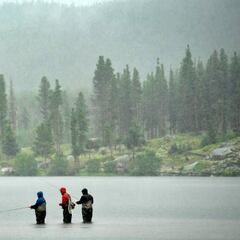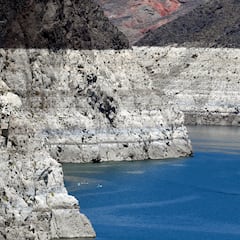Why are there so many accidents at the boating hotspot known as the ‘playpen’ in Chicago on Lake Michigan?
An area of Lake Michigan has had three fatalities in a week causing concern about safety in a well known party area of the lake.


A number of deaths in Lake Michigan has led to safety services issuing extra guidance on protecting people on the water. Authorities said boat captains need to be responsible with their guests on the water in the lake to prevent more people losing their lives.
The area of water in Lake Michigan is known as the ‘playpen’ due to its popularity for boats getting close to one another. Due to accidents and mistakes at least 35 people have died in the Lake this year alone.
Body recovered from Lake Michigan near Playpen, days after boater went missing https://t.co/RByz5dzX1f pic.twitter.com/vVs8aqjMXi
— CBS Chicago (@cbschicago) August 21, 2022
Accidents seem to happen as punters drink and boat at the same time with a lack of floatation devices. One man was pulled from the lake at 5 in the morning. Another accident occurred when a woman was pulled into the propellor of a yacht. She required a double amputation below the knee.
“It’s just too many boats, too many swimmers, and people not respecting the water the way they should,” Chicago Police Marine Unit Lt. Tony Mendez said.
“Please be responsible over water, wear those PFDs (personal floatation devices), swim with a partner, and if you’re going to swim or boat, please don’t drink,” Mendez said.
Chicago boat tragedies spark safety discussion about Lake Michigan’s ‘Playpen’ https://t.co/VYL5Xlp6F0
— Chicago Breaking News (@ChicagoBreaking) August 19, 2022
Not just drowning that makes the Great Lakes so dangerous
Aside from deaths by accidents, the lakes have plenty of other problems that people should be awaree of. Pollution in the lakes is extremely rife. According to the Rochester Institute of Technology, more than 22 million pounds (nearly 10 million kilogrammes) of plastic pollution is dumped in them each year. Of particular concern for humans is that these same lakes provide drinking water for 40 million people.
Related stories
The danger of ingesting microplastics in drinking water is they can cause cancer as well as a multitude of harmful chemicals.
“Harmful effects on cells are in many cases the initiating event for health effects,” said Evangelos Danopoulos, of Hull York Medical School, UK, and who led the research published in the Journal of Hazardous Materials. “We should be concerned. Right now, there isn’t really a way to protect ourselves [from microplastics].”

